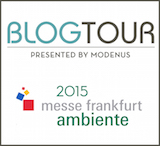Bioclimatic Garden Building Promotes Biodiversity
August 22, 2015 by Robin Plaskoff Horton
As part of a plan to promote biodiversity and protect the surrounding environment in the South American city of Cali. Colombia, the multi-use Host and Nectar Garden Building seeks to establish a network of gardeners and environmentally responsible citizens living in and around the complex.
Described as a “bioclimatic building,” the prototype building has a green facade that provides a microclimate within the building, reduces energy consumption, and a garden to attract insects and birds. It’s all part of an effort to create a network of “biological corridors.”
A collaborative effort by Madrid-based Husos, a platform for the development of both spatial interventions and research projects in architecture and urbanism, the project involved the creation of gardens as well as activities to engage the community in understanding and protecting their natural environment.
Gardeners planted a variety of native bushes and climbing plants designed to host and produce nectar for butterflies and create a habitat for birds and other local insect species.
Butterflies are considered model organisms for studying the impacts of habitat loss and fragmentation resulting from climate change. They function as indicators of the health of the environment and ecosystem wherein this structure resides, a region that is host to one of the world’s greatest concentrations and diversity of butterflies.
Developed in collaboration with biologists from the Cali zoo, the building and gardens offer an educational experience and a place to forge new bonds between the Caleños and their natural environment.
Neighborhood children can participate in workshops, and visitors receive seeds and brochures to encourage them to plant gardens on their balconies, front yards, and patios.
From the Husos website: Husos is committed to the development of an architecture that is sensitive to everyday demands, to the transformational capacity of small daily actions, to the empowerment of micro-communities, to the possibilities of cooperation and exchange, to the beauty of diversity and singularity, to the constructive role of shared imaginations and affections and to the potentials of the unexpected. We employ an approach that is environmentally responsible, trans-disciplinary, and permeable.
h/t ArchDaily.















 e-mail a friend
e-mail a friend








I bet waking up there would be lovely, the fresh smell hitting your nostrils everyday rather than traffic and coffee!
— August 23, 2015 @ 02:56
Art Project Creates Symbiosis Between Plants and Computers Pingback said:
[…] and people. “On the most basic level,” explains Vermeulen, “Biomodd creates symbiotic relationships between plants and computers, and ignites conversations among the community around […]
— October 12, 2015 @ 19:03
The Rise of Urban Vertical Forests – gardening.newspaperperiod.com Pingback said:
[…] Vertical forests–living , breathing skyscrapers enveloped in trees, shrubs, and flowering plants–can, like the one’s featured above, absorb 25 tons of carbon dioxide annually and produce roughly 60 kilograms of oxygen daily, while also promoting local urban biodiversity. […]
— August 29, 2017 @ 03:43
Hood Gardens-Gardeners Supply Tips,Manage Gardens,Grow Plants Pingback said:
[…] Vertical forests–living , breathing skyscrapers enveloped in trees, shrubs, and flowering plants–can, like the one’s featured above, absorb 25 tons of carbon dioxide annually and produce roughly 60 kilograms of oxygen daily, while also promoting local urban biodiversity. […]
— November 29, 2017 @ 03:34
Biomimicry mimics sustainable design solutions found in nature. Pingback said:
[…] many disciplines with concepts like a grow-your-own house, a living, breathing chandelier, a bioclimatic garden, and a reimagined food […]
— March 19, 2018 @ 17:16
Biomimicry mimics sustainable design solutions found in nature. – My Garden ?deas Blog Pingback said:
[…] many disciplines with concepts like a grow-your-own house, a living, breathing chandelier, a bioclimatic garden, and a reimagined food […]
— September 3, 2019 @ 12:20
This Building's Green Facade Mirrors Shape Of Europe - Urban Gardens Pingback said:
[…] In an effort by the European Environment Agency (EEA) to raise awareness about the benefits of urban biodiversity, the EEA constructed this living wall utilizing 20 annual flowering plant species from across […]
— June 20, 2022 @ 12:41